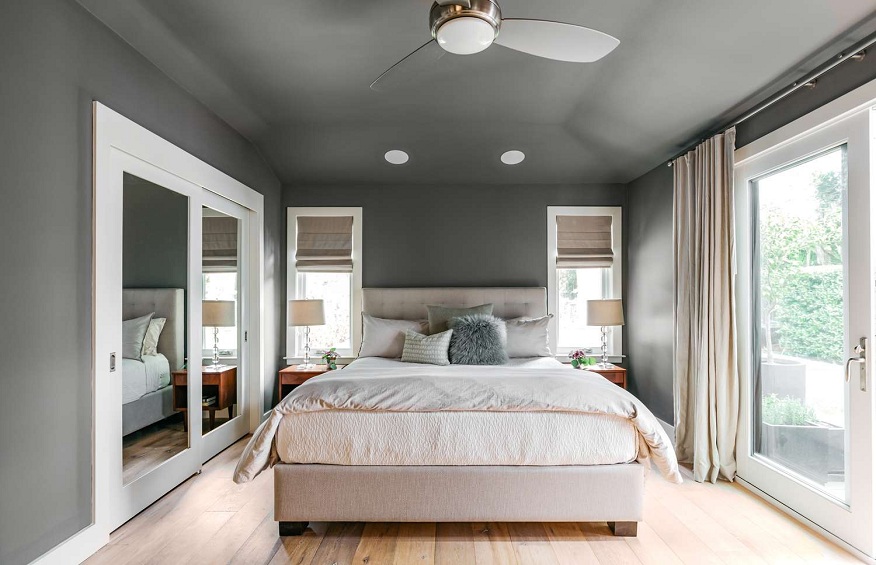Should the ceiling be painted the same color as the walls?
This seemingly simple question can have a profound impact on the overall ambiance and aesthetic of your interior design. It’s a choice that can dramatically alter your space, making it feel bigger or smaller, cozier or more spacious, traditional or modern. In this post, we will thoroughly explore the pros and cons of painting the pop ceiling design the same color as the walls, providing you with valuable insights to help guide your next home decorating project.
Pros of Painting Ceiling the Same Color as Walls
1. Cost-Effective
Keeping the ceiling colour design uniform by painting both the ceiling and walls the same color can be a cost-effective move. This way, you only need to purchase one type of paint, potentially saving on costs for different colors or finishes. Plus, any leftover paint can be stored and used for future touch-ups or reapplications, further contributing to cost savings.
2. Faster Turnover
When you choose to paint your ceiling and walls the same color, it could significantly speed up the painting process. Without the need to switch between paints or clean brushes when moving from walls to ceiling, you can complete the task in a shorter amount of time. It also eliminates the need for precision painting at the junction of the wall and the ceiling.
3. Creates an Illusion of Space
Opting for a single color scheme across walls and ceilings can create a seamless transition between these two elements, which can make the room appear larger and more spacious. This illusion of expanded space can be particularly beneficial in smaller rooms or spaces with low ceilings, helping to avoid a cramped or claustrophobic feel.
4. Makes a Room Look Clean and Relaxed
Using the same color across your room’s surfaces creates a harmonious and balanced look. This monochromatic ceiling colour design approach can lend a clean, relaxed ambiance to the room, making it an ideal choice for those who appreciate a minimalist aesthetic or seek a calming, tranquil space.
5. Allows Other Elements to Pop Up
When the walls and ceiling share the same color palette, other elements within the room, like furniture, artwork, or unique architectural features, can stand out more. These items become the room’s focal points, drawing the eye and adding visual interest to the space.
Cons of Painting Ceiling the Same Color as Walls
1.Obscure a Gorgeous Ceiling Molding
If your room features an ornate or beautifully crafted pop ceiling design, painting it the same color as your walls may cause it to blend in with the rest of the room. The intricate details and aesthetic appeal of the molding might become less noticeable, diminishing its impact and potential to serve as a room highlight.
2. Can Make a Room Look Cold and Lifeless
Depending on the color chosen, a monochromatic scheme for both the ceiling and walls could potentially make a room feel cold, stark, and lifeless. Warmer or darker colors might not work as well when applied in large amounts, leading to an uninviting atmosphere.
3. Can Make a Room Overbearing
Excessive use of a single color, especially if it’s bold or dark, can make a space feel overbearing or overwhelming. It can create a sense of saturation that might be uncomfortable for some, and also make the room feel smaller and more confined than it actually is.
4. A Challenge to Find Décor and Furniture
If the walls and ceiling are painted the same color, it might pose a challenge when trying to find décor and furniture that complement the room. You’ll need to carefully consider color schemes, textures, and styles to ensure everything blends well together, adding complexity to your interior decorating task.
The decision to paint your pop ceiling design the same color as your walls is a personal one, influenced by factors such as the size and lighting of your room, the presence of architectural features, and your own aesthetic preferences. While this approach can offer, it also has potential downsides. So, the key is to carefully consider these pros and cons, and perhaps even seek professional advice, before making your final decision.
Remember that paint is transformative but not permanent, so don’t be afraid to experiment and see what works best for your interior design!

